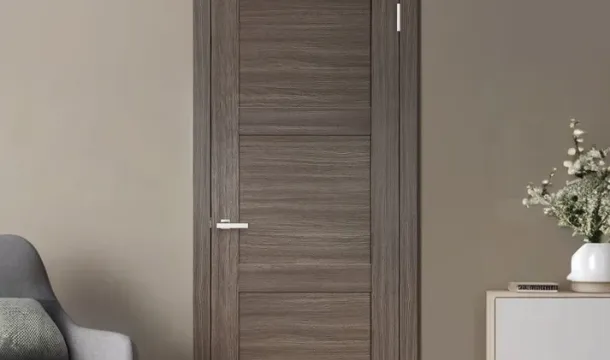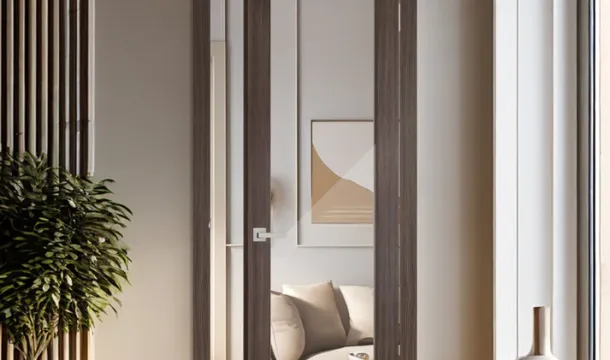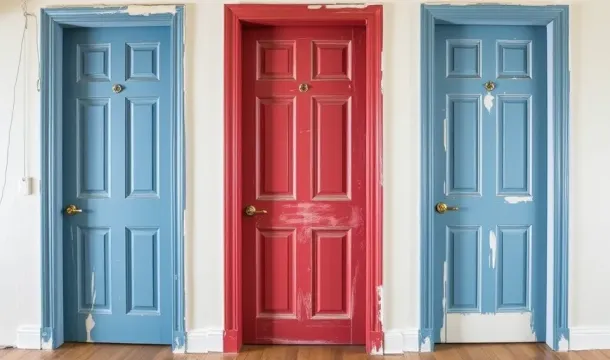Matching interior doors to window frames a style guide
Popular Articles
Select door profiles that mirror your window casings for a unified room design. For example, a flat-panel interior door complements the clean lines of modern, vinyl-framed windows common in Toronto condominiums. In contrast, a six-panel Shaker style door aligns with the traditional wood window frames found in many Ottawa and Montreal heritage homes. This direct visual link between openings establishes a consistent architectural language, making the space feel intentionally designed rather than assembled piecemeal.
Material choice directly impacts both aesthetics and performance. Solid core doors, often constructed with a wood fiber core and real wood veneers, provide substantial sound insulation and a feel that matches the heft of wooden window frames. For budget-conscious renovations, consider engineered doors with a stable MDF core and durable PVC or laminate finishes; these resist warping in humid conditions and offer a clean, paintable surface. Avoid hollow-core doors with honeycomb fillers for main living areas, as they lack the acoustic and thermal properties that contribute to a cozy home environment.
Coordinate the finish, not necessarily an exact match, to create harmony. If your window frames are painted white, choose a door within the same white family but consider a different sheeneggshell on the windows and semi-gloss on the doorto add depth. For natural wood windows, select a door with a wood species and stain that complements, rather than perfectly matches, the tone of the frames. This approach allows for stylistic cohesion while accommodating natural variations in wood grain and color, a practical solution for Canadian homeowners sourcing materials from different suppliers.
We supply and install European-manufactured interior doors across Quebec and Ontario, focusing on products that balance cost with quality. Our collection includes models with solid wood frames and laminated finishes designed for easy cleaning and long-term durability. For customers in Montreal and Toronto, we offer professional measurement and installation services to ensure a precise fit and finish, turning the selection of matching doors and windows into a straightforward home improvement project that adds immediate value and style.
Choosing the Same Material
Select identical core materials for your doors and window frames to guarantee a uniform expansion and contraction rate with seasonal humidity changes. In Canadian climates, solid wood products react strongly to dry winters and humid summers. A mismatch can cause sticking doors or visible gaps around frames. Using the same material, like full-length pine for both, ensures both elements age and move in sync, preserving alignment and operation for years.
Solid Wood vs. Engineered Wood
For a premium, consistent look, specify kiln-dried pine or oak for your entire project. This option provides superior sound insulation and a solid feel. For budget-conscious renovations, high-quality engineered doors with wooden frames and a honeycomb paper filler are a practical choice. These units offer significant stability against warping and are considerably lighter, which can simplify installation in older homes in Toronto or Ottawa. The key is to match the surface material; a PVC-wrapped engineered door pairs best with a PVC-clad window frame for a seamless, low-maintenance finish.
Material Impact on Installation and Finish
The material choice directly affects installation. Solid wood frames require precise shimming and anchoring to handle their weight. Engineered options with wooden frames are more forgiving. For a cohesive result, plan the finishing process together. Sand and stain raw wood doors and frames in the same session to ensure an exact colour match. Pre-finished PVC or laminated products should be ordered from the same supplier and batch to avoid slight colour variations. Many suppliers in Montreal and across Quebec offer bundled material packages for doors and windows, ensuring visual consistency and often including delivery.
Matching Color and Finish
Select a paint sheen that differs between your doors and window frames for a professional result. Use a satin or semi-gloss (25-35% sheen) on doors for durability against frequent handling. Apply a matte or flat finish (0-10% sheen) on window frames and trim to minimize the appearance of surface imperfections. This contrast in sheen unifies the elements while adding subtle depth.
Navigating White and Stained Finishes
For white units, specify the exact undertone. Pure, bright whites with blue or grey bases suit modern homes in Toronto's newer condos. Warm, creamy whites complement traditional interiors found in Montreal's character houses. With stained wood, match the wood species firstoak to oak, walnut to walnut. Then, test the stain on a sample piece of the actual door and window frame material, as engineered wood and solid wood absorb stain differently, leading to color variance.
Modern PVC-wrapped doors and frames offer consistent color throughout the material, eliminating touch-up issues. A budget-friendly option for Canadian homes, these units resist chipping and fading from UV exposure. For a coordinated look, request color swatches from your supplier to compare under your home's natural and artificial lighting before ordering.
Practical Application for a Flawless Look
Order paint and finish products from the same manufacturer and batch to guarantee a perfect match. Use a high-quality brush for trim and a small roller for flat panels to achieve a uniform texture. Allow adequate drying time between coats; latex paints typically need 4-6 hours in Ottawa's variable humidity, while oil-based finishes may require 24 hours. Proper application ensures your doors and windows maintain their cohesive appearance for years.
Selecting Unified Profiles
Align the profile shape of your doors and window frames precisely, as this detail defines the architectural character of a room. For a classic Canadian home, a 2-panel shaker-style door pairs exactly with a matching sash window frame, creating a clean, grid-like appearance. Modern interiors benefit from a single, flat-profile slab door used alongside large, minimalist window casings with minimal visible trim. The profile is the silhouette; ensure it is consistent across all openings for a cohesive look.
Profile Types and Their Impact
Ogee or colonial profiles on doors demand window casings with a similarly ornate cross-section to feel intentional, not mismatched. Conversely, a simple, square-edged profile on a solid core door with a wood veneer finish requires a window frame with an equally straightforward, blocky shape. This consistency is critical in open-plan spaces common in Toronto and Ottawa condos, where sightlines are long and any stylistic disconnect becomes immediately apparent.
Practical Considerations for Installation
Verify the profile dimensions with your supplier before finalizing your order. A door jamb with a 2-inch profile width will look unbalanced next to a thin, 1-inch window casing. Many European-style doors we supply for the Montreal market feature pre-finished, unified trim packages to eliminate this guesswork. For installation, use a consistent method for attaching trim; a brad nailer with matching wood filler ensures a seamless, professional finish that hides joints and fasteners, maintaining the profile's clean lines.
Popular Articles

Choosing the Perfect Interior Doors for Your Canadian Home

A Complete Guide to Choosing Interior Doors for Canadian Homes
